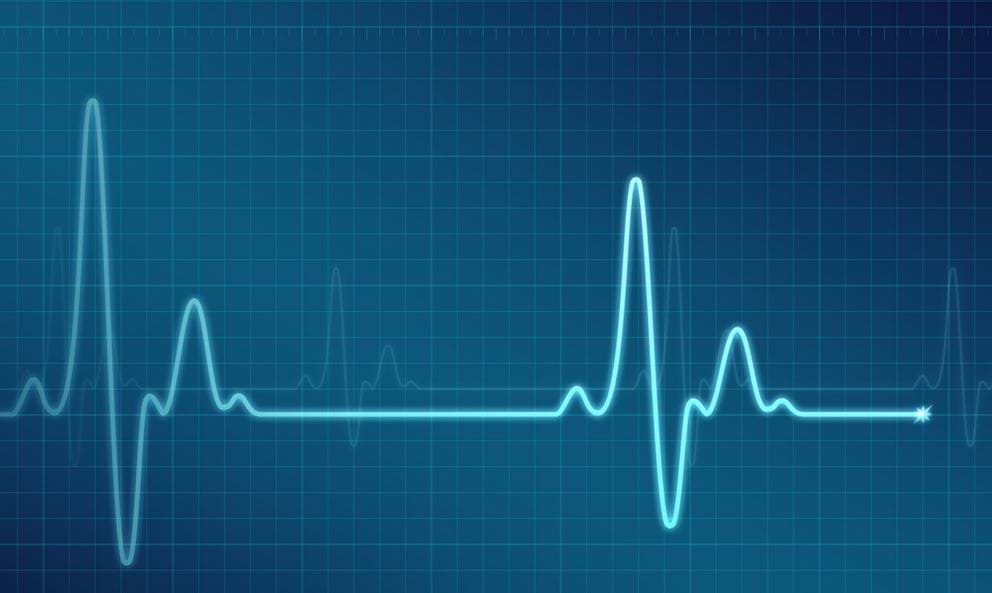What Tracking Your Heart Rate Could Tell You

Heart rate is one of the most widely-tracked and referred to metrics for overall health and fitness out there, with every other wearable fitness device now offering basic heart rate readings.
The story’s simple. High heart rate is bad, low heart rate is good.
But what does your heart rate really tell you about your health and fitness? Let’s take a look.
A high resting heart rate can predict severe heart problems
A 2008 study carried out by the Women’s Health Initiative Research Group1 found that a high resting heart rate (over 76 beats per minute) was associated with a greater risk of coronary complications and death — although not strokes.
A 2006 meta-analysis2 found similar results, noting that resting heart rate was a predictor for stroke, arterial disease, sudden death, and even non-coronary illnesses.
In other words, keeping a low resting heart rate is generally a good target to aim for.
A low resting heart rate isn’t always great, either
A resting heart rate of between 60-100 beats per minute is generally considered to be within the normal range. While it’s known that well-conditioned athletes will have a lower resting heart rate, there can also be other, less healthy reasons for a low resting heart rate.
One of these is a condition known as bradycardia3, which can be a sign that the heart’s electrical system has been damaged, or that you’re experiencing a thyroid condition, among other issues.
If your resting heart rate is below 60 and you’re not very physically active, consider booking an appointment with your doctor to see if something else might be going on.
You can use your heart rate to judge your fat burning ‘sweet spot’
One 2009 study4 found that maximal fat burning occurred at 54.2% of one’s VO2 Max, which corresponds to roughly 70% of the individual’s max heart rate.5
The American Heart Association suggests that the max heart rate for a 20-year old would be around 200 beats per minute, while every decade of life would decrease that number by 10 beats per minute.6 In this example, a 20-year old’s ideal ‘fat burning’ heart rate would be 140 beats per minute.
In any case, there’s good science behind the common ‘fat burning zone’ suggestions — and heart rate can be used as a reliable indicator of when you’re in an ideal ‘fat burning state’.
Heart rate trackers can paint a false picture
Positives aside, one key thing to keep in mind with heart rate trackers is that they can present a false picture of your heart health. This is especially true if you read them wrong, or obsess over them. It’s natural for your heart rate to fluctuate throughout the day, depending on what you’re getting up to at any given time. Whether you’ve just run up the stairs, or whether you’ve just thrown back a double espresso will obviously increase your heart rate reading.
To accurately measure your resting heart rate, you’ll want to check your reading immediately after waking up, first thing in the morning. Analysing your readings every minute of the day, on the other hand, is likely to be nothing other than counterproductive.
1 http://www.bmj.com/content/338/bmj.b219
2 https://www.ncbi.nlm.nih.gov/pmc/articles/PMC5056889/
3 https://www.cardiosmart.org/healthwise/aa10/7571/aa107571
4 https://www.ncbi.nlm.nih.gov/pubmed/19855335
5 http://www.shapesense.com/fitness-exercise/calculators/heart-rate-and-percent-vo2max-conversion-calculator.aspx
6 http://www.heart.org/HEARTORG/HealthyLiving/PhysicalActivity/FitnessBasics/Target-Heart-Rates_UCM_434341_Article.jsp#.WdMbE2hSzIU


